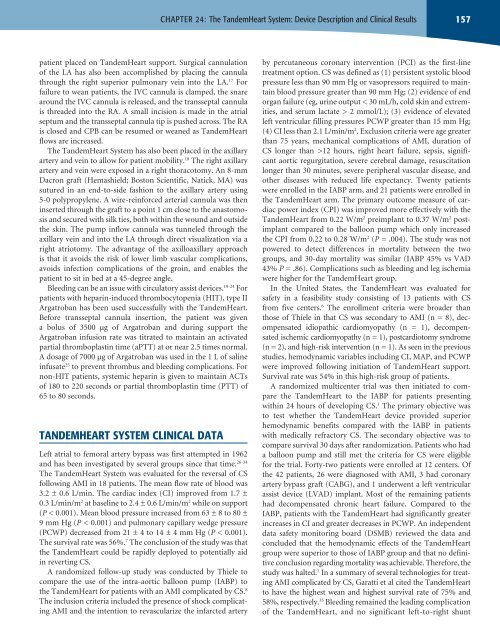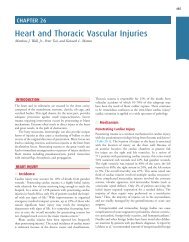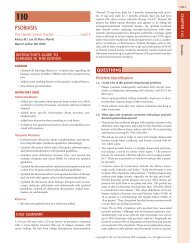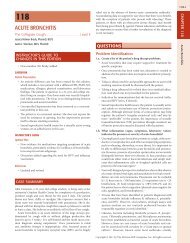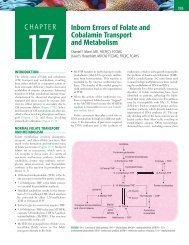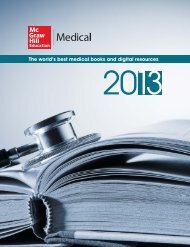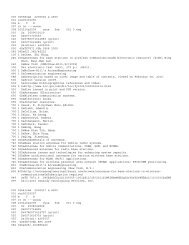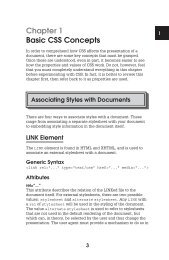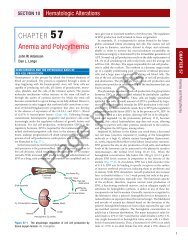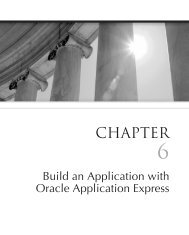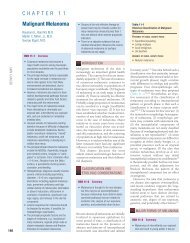THE TANDEMHEART SYSTEM: DEVICE DESCRIPTION AND ...
THE TANDEMHEART SYSTEM: DEVICE DESCRIPTION AND ...
THE TANDEMHEART SYSTEM: DEVICE DESCRIPTION AND ...
You also want an ePaper? Increase the reach of your titles
YUMPU automatically turns print PDFs into web optimized ePapers that Google loves.
patient placed on TandemHeart support. Surgical cannulation<br />
of the LA has also been accomplished by placing the cannula<br />
through the right superior pulmonary vein into the LA. 17 For<br />
failure to wean patients, the IVC cannula is clamped, the snare<br />
around the IVC cannula is released, and the transseptal cannula<br />
is threaded into the RA. A small incision is made in the atrial<br />
septum and the transseptal cannula tip is pushed across. The RA<br />
is closed and CPB can be resumed or weaned as TandemHeart<br />
flows are increased.<br />
The TandemHeart System has also been placed in the axillary<br />
artery and vein to allow for patient mobility. 18 The right axillary<br />
artery and vein were exposed in a right thoracotomy. An 8-mm<br />
Dacron graft (Hemashield; Boston Scientific, Natick, MA) was<br />
sutured in an end-to-side fashion to the axillary artery using<br />
5-0 polypropylene. A wire-reinforced arterial cannula was then<br />
inserted through the graft to a point 1 cm close to the anastomosis<br />
and secured with silk ties, both within the wound and outside<br />
the skin. The pump inflow cannula was tunneled through the<br />
axillary vein and into the LA through direct visualization via a<br />
right atriotomy. The advantage of the axilloaxillary approach<br />
is that it avoids the risk of lower limb vascular complications,<br />
avoids infection complications of the groin, and enables the<br />
patient to sit in bed at a 45-degree angle.<br />
Bleeding can be an issue with circulatory assist devices. 19-24 For<br />
patients with heparin-induced thrombocytopenia (HIT), type II<br />
Argatroban has been used successfully with the TandemHeart.<br />
Before transseptal cannula insertion, the patient was given<br />
a bolus of 3500 µg of Argatroban and during support the<br />
Argatroban infusion rate was titrated to maintain an activated<br />
partial thromboplastin time (aPTT) at or near 2.5 times normal.<br />
A dosage of 7000 µg of Argatroban was used in the 1 L of saline<br />
infusate 25 to prevent thrombus and bleeding complications. For<br />
non-HIT patients, systemic heparin is given to maintain ACTs<br />
of 180 to 220 seconds or partial thromboplastin time (PTT) of<br />
65 to 80 seconds.<br />
<strong>T<strong>AND</strong>EMHEART</strong> <strong>SYSTEM</strong> CLINICAL DATA<br />
Left atrial to femoral artery bypass was first attempted in 1962<br />
and has been investigated by several groups since that time. 26-34<br />
The TandemHeart System was evaluated for the reversal of CS<br />
following AMI in 18 patients. The mean flow rate of blood was<br />
3.2 ± 0.6 L/min. The cardiac index (CI) improved from 1.7 ±<br />
0.3 L/min/m 2 at baseline to 2.4 ± 0.6 L/min/m 2 while on support<br />
(P < 0.001). Mean blood pressure increased from 63 ± 8 to 80 ±<br />
9 mm Hg (P < 0.001) and pulmonary capillary wedge pressure<br />
(PCWP) decreased from 21 ± 4 to 14 ± 4 mm Hg (P < 0.001).<br />
The survival rate was 56%. 7 The conclusion of the study was that<br />
the TandemHeart could be rapidly deployed to potentially aid<br />
in reverting CS.<br />
A randomized follow-up study was conducted by Thiele to<br />
compare the use of the intra-aortic balloon pump (IABP) to<br />
the TandemHeart for patients with an AMI complicated by CS. 8<br />
The inclusion criteria included the presence of shock complicating<br />
AMI and the intention to revascularize the infarcted artery<br />
CHAPTER 24: The TandemHeart System: Device Description and Clinical Results<br />
157<br />
by percutaneous coronary intervention (PCI) as the first-line<br />
treatment option. CS was defined as (1) persistent systolic blood<br />
pressure less than 90 mm Hg or vasopressors required to maintain<br />
blood pressure greater than 90 mm Hg; (2) evidence of end<br />
organ failure (eg, urine output < 30 mL/h, cold skin and extremities,<br />
and serum lactate > 2 mmol/L); (3) evidence of elevated<br />
left ventricular filling pressures PCWP greater than 15 mm Hg;<br />
(4) CI less than 2.1 L/min/m 2 . Exclusion criteria were age greater<br />
than 75 years, mechanical complications of AMI, duration of<br />
CS longer than >12 hours, right heart failure, sepsis, significant<br />
aortic regurgitation, severe cerebral damage, resuscitation<br />
longer than 30 minutes, severe peripheral vascular disease, and<br />
other diseases with reduced life expectancy. Twenty patients<br />
were enrolled in the IABP arm, and 21 patients were enrolled in<br />
the TandemHeart arm. The primary outcome measure of cardiac<br />
power index (CPI) was improved more effectively with the<br />
TandemHeart from 0.22 W/m 2 preimplant to 0.37 W/m 2 postimplant<br />
compared to the balloon pump which only increased<br />
the CPI from 0.22 to 0.28 W/m 2 (P = .004). The study was not<br />
powered to detect differences in mortality between the two<br />
groups, and 30-day mortality was similar (IABP 45% vs VAD<br />
43% P = .86). Complications such as bleeding and leg ischemia<br />
were higher for the TandemHeart group.<br />
In the United States, the TandemHeart was evaluated for<br />
safety in a feasibility study consisting of 13 patients with CS<br />
from five centers. 6 The enrollment criteria were broader than<br />
those of Thiele in that CS was secondary to AMI (n = 8), decompensated<br />
idiopathic cardiomyopathy (n = 1), decompensated<br />
ischemic cardiomyopathy (n = 1), postcardiotomy syndrome<br />
(n = 2), and high-risk intervention (n = 1). As seen in the previous<br />
studies, hemodynamic variables including CI, MAP, and PCWP<br />
were improved following initiation of TandemHeart support.<br />
Survival rate was 54% in this high-risk group of patients.<br />
A randomized multicenter trial was then initiated to compare<br />
the TandemHeart to the IABP for patients presenting<br />
within 24 hours of developing CS. 1 The primary objective was<br />
to test whether the TandemHeart device provided superior<br />
hemodynamic benefits compared with the IABP in patients<br />
with medically refractory CS. The secondary objective was to<br />
compare survival 30 days after randomization. Patients who had<br />
a balloon pump and still met the criteria for CS were eligible<br />
for the trial. Forty-two patients were enrolled at 12 centers. Of<br />
the 42 patients, 26 were diagnosed with AMI, 3 had coronary<br />
artery bypass graft (CABG), and 1 underwent a left ventricular<br />
assist device (LVAD) implant. Most of the remaining patients<br />
had decompensated chronic heart failure. Compared to the<br />
IABP, patients with the TandemHeart had significantly greater<br />
increases in CI and greater decreases in PCWP. An independent<br />
data safety monitoring board (DSMB) reviewed the data and<br />
concluded that the hemodynamic effects of the TandemHeart<br />
group were superior to those of IABP group and that no definitive<br />
conclusion regarding mortality was achievable. Therefore, the<br />
study was halted. 1 In a summary of several technologies for treating<br />
AMI complicated by CS, Garatti et al cited the TandemHeart<br />
to have the highest wean and highest survival rate of 75% and<br />
58%, respectively. 35 Bleeding remained the leading complication<br />
of the TandemHeart, and no significant left-to-right shunt


